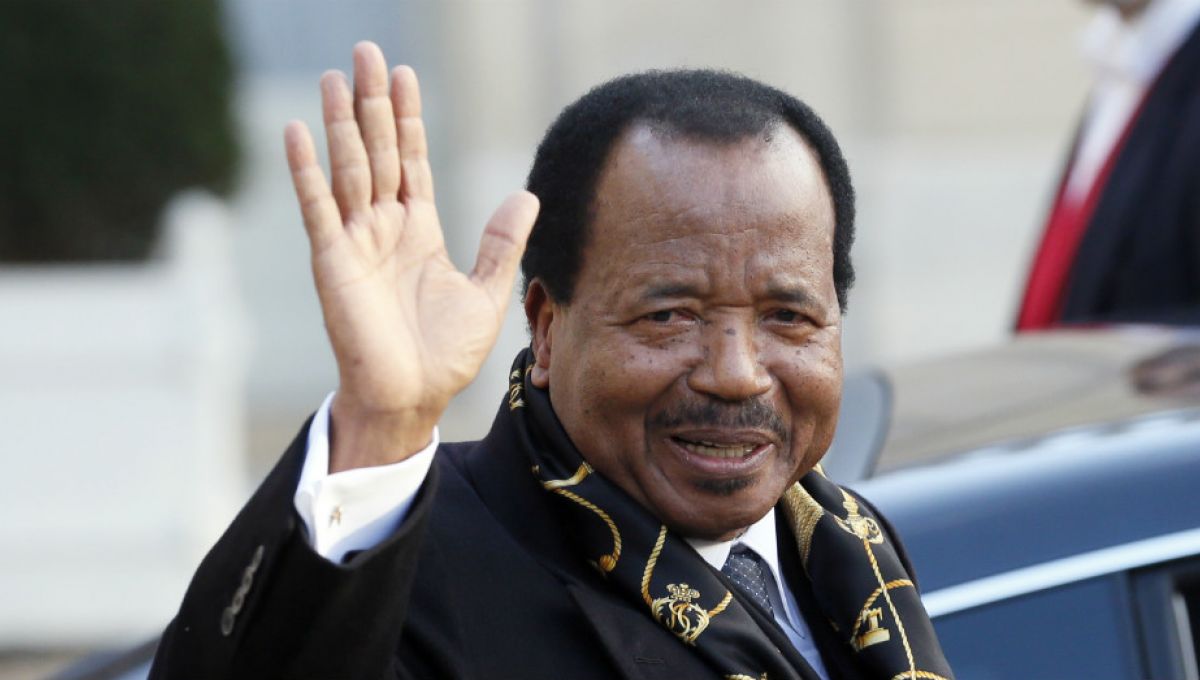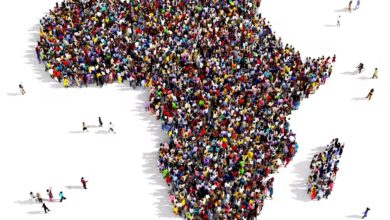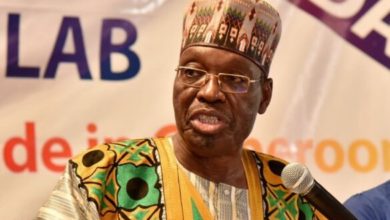Fact-Check: Yes, There’s A Humanitarian Crisis In Cameroon And It’s Getting Worse

By Ayang Macdonald
Claim: Paul Atanga Nji, Cameroon’s Minister of Territorial Administration, who’s coordinating a USD 23 million (XAF 12. 5 billion) government emergency humanitarian assistance plan for victims of the ongoing bloody armed conflict in the two Anglophone regions of the central African country, said in December 2019 without blinking that “…there is no humanitarian crisis in Cameroon.”
Atanga Nji said at a press conference on December 28 that as at then, Cameroon had only 152, 000 refugees in the North West and South West and that since the government humanitarian plan was launched in June 2018, over 160, 000 internally displaced persons in the two regions had received government aid, while 10, 000 others living out of the said regions, had also benefitted.
These were his words: “For some time now, some ill-intentioned political actors and non-governmental organisations manipulated by government detractors, and some of our partners animated by bad faith have been struggling to push through unfounded information to the international community that the situation in the North West and South West regions has led to a humanitarian crisis in Cameroon…No, there is no humanitarian crisis in Cameroon, the situation is under control and is well managed…”
Verdict: There’s indeed a humanitarian crisis in Cameroon’s North West and South West regions, and it’s getting worse by the day.
The Cameroon minister’s public claim of the non-existence of a humanitarian crisis in the Anglophone regions of the country clearly runs against the existing reality on the ground as many facts demonstrate that his assertion is utterly untrue.
There are many reports by UN agencies, as well as independent local and international rights groups and humanitarian organisations, which indicate that there is indeed a humanitarian crisis in Cameroon’s English-speaking regions, and that the situation has been deteriorating by the day.
UN figures and those of other local organisations like the Centre for Human Rights and Democracy in Africa, contradict Atanga Nji’s claims and figures. They put the number of IDPs at over 900, 000. United Nations figures indicate, for instance, that nearly 6,000 people were internally displaced as a result of the crisis in the month of December 2019 alone. This means that hundreds of thousands more displaced persons are not even on government’s records and consequently have no access to its aid package. More so, Atanga Nji said the 152, 000 figure came about from statistics given by local administrators, but did not give specific details.
While rights groups report that the military has burned down more than 200 villages leaving desperate citizens homeless, thousands of others who long lost their original settlements continue to wallow in lack of basic food supplies, leaving room for what is feared to be an impending humanitarian catastrophe, according to the UN and other international humanitarian organisations.
Thousands of internally displaced persons have continued to face severe food shortages and lack of other vital relief items despite an emergency humanitarian assistance plan having been launched by government in June 2018 worth XAF 12.5 billion (circa $23 million) to take care of victims of the war.
That the government in Yaounde created a humanitarian assistance emergency plan is first proof that it recongnised the extent of the fallout of the armed fighting between government forces and militia separatists on civilian communities, contrary to Atanga Nji’s claim.
Nearly two years down the line of execution of the emergency humanitarian plan, not much has been achieved by government in terms of rehabilitating and resettling victims, as well as reestablishing their homes and lost jobs and businesses.
According to a May 2019 report of the United Nations High Commission for Refugees, an estimated 4.3 million people (about half of the entire population of the two concerned regions) are in desperate need of urgent humanitarian intervention. The UN Office for the Coordination of Humanitarian Affairs has also estimated that more USD 93.5 million is needed to ensure an effective humanitarian response in the two affected regions. But humanitarian groups on the ground hold that there is a significant funding shortfall as government’s humanitarian spending is just under $21 million and donations from international donors are not forth coming.
That government of Cameroon dispatched about 200 truckloads of food and non-foot items to victims in mostly urban areas in the two regions throughout 2019 because there exist a crisis that requires robust humanitarian intervention. Even at that, humanitarian groups operating on the ground say the impact of Cameroon government’s action is not felt in the backcountry and in some of the crisis hotspots where victims have no access to the supplies due to the high rate of insecurity and lingering fighting between militia men and government forces.
Atanga Nji contradicted himself in the same December 28 statement saying his office had held several meetings with UN bodies such as the UNHCR, WFP, WHO, OCHA, UNICEF, and other independent organisations, to discuss “the humanitarian situation.” This would not have happened if there were no “humanitarian crisis.”

Worrying observations
The Food and Agriculture Organisation, FAO, in an April 2019 report cited Cameroon among 10 countries facing a food crisis due to prolonged conflicts. The FAO, in the report then, said almost 1.1 million people were in want of food as a result of the crisis in the North West and South West Regions. “The frequent lockdown and ghost town days are affecting economic activities, the functioning of markets and the start of the agricultural season,” a portion of the report read.
In another observation in a statement later in October of same year, the UN body expressed more worries: “Violence in the North West and South West regions has led to increasing displacement, which in turn, has disrupted agricultural activities and worsened food security levels in areas where 70 percent of people rely on agriculture for their livelihoods.”
The body says it needed about USD 20 million to attend to over 230, 000 people threatened by the food insecurity within the framework of its 2017-2020 Humanitarian Response Plan.
Cameroon has world’s most crisis
For the second year running, in June 2020, Cameroon was ranked on top of the world’s top ten countries with the most neglected humanitarian crises. The ranking was done by the Norwegian Refugee Council, which is deeply involved in humanitarian work in the two Anglophone regions of the country. The countries are ranked based on three considerations: lack of political will to resolve the crisis, lack of international aid and lack of adequate media attention. Apart from this, killings have also continued unabated in the two crisis-hit regions, posing a veritable threat to a recently launched project called the Presidential Plan for the Reconstruction and Development of the war-ravaged North West and South West.
Conclusion: From the above facts, and even more, the Cameroon Minister’s claim that “there is no humanitarian crisis” in the English-speaking regions of Cameroon is utterly misleading and clearly intended to undermine the severity of a prolonged armed conflict whose consequences Yaounde has repeatedly denied, like the UN decried in May last year.




